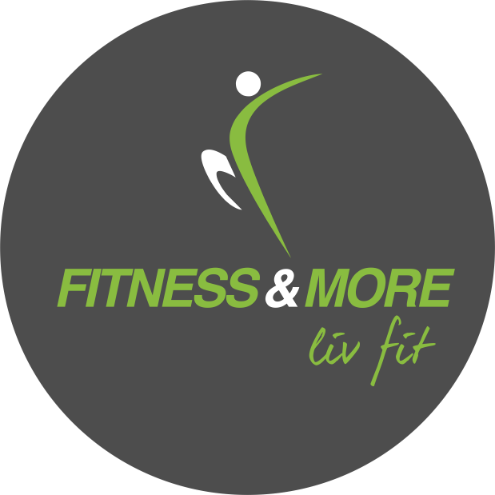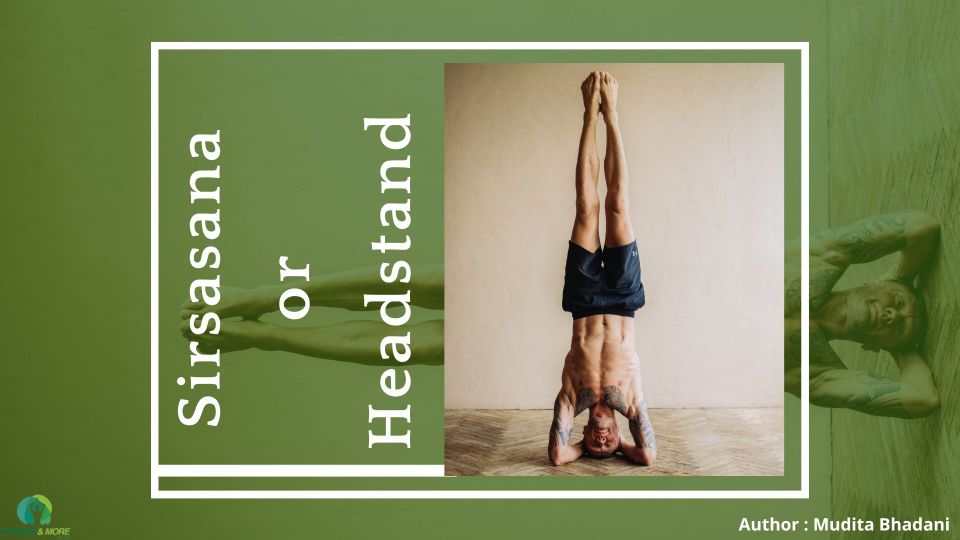Sirsasana or Headstand is one of the advanced postures in Yoga. The posture involves balancing on the head and is one of the difficult poses to master. It requires a great amount of strength in the core, shoulder arms and flexibility in the hamstrings to do the pose correctly and hold it for some time. Further, it also requires focus and concentration to perform this pose correctly.
Beginners should perform this posture in the presence of Yoga trainers so that the trainer can help to correct the alignment of the body if done incorrectly, it can lead to serious injuries over the head, neck or spine.
As a beginner, I always found this posture very fascinating and spent hours in scrolling videos to search how to do this posture correctly different people teach different techniques to master this pose i.e. with help of a chair, wall or starting through single-leg etc., however, I have explained the technique which worked out best for me. Further, some videos even claim that this pose can be mastered in a week. However, the truth is that balancing in this posture takes time… sometimes a year, depending upon the capacity of an individual.
We have described below the benefits of this posture, how to start learning this posture for beginners, contraindications and one of the most important parts is how to maintain balance and fall in this posture.
What Is Sirsasana?
The word Sirsasana consists of two Sanskrit words, Sirsa and Asana. Sirsa means head, and Asana means “posture”. It is a posture which is performed by way of balancing on the head.
It is also called as king of all poses, as it energizes the entire body and speeds blood circulation towards the head and provides a lot of benefits to the entire body.
Benefits Of Sirsasana
The posture has a lot of physical and spiritual benefits. Some of the major benefits are as follows:
Physical Benefits
- It strengthens the upper body including arms, shoulder, elbow and core muscles as most of the body weight is balanced by the arms and shoulders
- It also strengthens the abdomen muscles as the core is kept tight and is entirely engaged to balance the body in position, which in turn strengthens the digestive system.
- It also lengthens the spine and helps to improve the alignment of the body. Further, helps to reduce pressure or tightness in the lower back
- It also strengthens the respiratory system and the lymphatic system of the body and helps in eliminating toxic substances from the body
- It also helps in providing a glow to the skin and reduces loss of hair as due to the inversion position the blood circulation increases towards the head and scalp
- It also helps to maintain youth and slows down the ageing process
- It helps in the reduction of weight and improves eyesight
Spiritual Benefits
- It helps in the improvement of focus, concentration and memory
- It relaxes our mind and body and reduces the stress level
- It helps to increase the awareness of the body
- It also helps to activate the Ajna chakra and Sahasrara chakra
Preparatory Poses
Some of the preparatory poses are as follows:
- Downward Facing Dog – Try holding in downward facing dog with the crown of head touching the floor. Further, keep your legs straight and do not lift the heels from the floor.
- High Plank and Elbow Plank – Planks help to strengthen the arms, shoulder and core muscles.
- Dolphin Pose: It helps to strengthen the shoulders and core muscles. You can also try lifting your legs (alternatively) in the Dolphin pose
Who Should Not Do Sirsasana?
- People who are suffering from migraine, neck, shoulder and back injuries should avoid doing it
- People with heart conditions, vertigo, and high blood pressure should also avoid it
- Women should not do it in the menstrual cycle. Further, pregnant women should not do it
- The posture should not be performed after having meals
- Further, beginners should do it only under the supervision of a Yoga expert.
How Long Can It Be Done?
Starting practice can be done for 30 seconds and can be later increased to 10-15 minutes as per the capability of the body. It gives the best results when it is performed in the morning.
Further, it should be performed empty stomach or 3-4 hours after eating.
Steps To Perform Sirsasana For Beginners
Phase 1
- Sit on the floor in Vajrasana and then bend forward with arms folded and placed on the mat.
- Interlock the fingers in such as way that a triangle is formed with arms
- Put the crown of the head on the mat with fingers interlocked supporting the back of the head. It supports the head when the body is in Sirsasana.
- From this position, lift the knees from the floor and straighten your legs with hips towards the ceiling (as in dolphin pose) and try walking towards the head until the back is straight
Phase 2: To be performed when a person is comfortable in Phase 1
- Now, try to lift by bending a knee and also try to keep your heel near the hips.
- When a person is comfortable with one leg, try lifting another leg by bending the knee. Do not try to straighten the leg as you may lose your balance.
- Try holding up for some time in this position. As a beginner, you can hold this position for a few weeks
Phase 3: Once phase 2 is achieved
- When comfortable with the above steps, try lifting a leg at 90 degrees, with another leg still folded. Then try lifting the other leg at 90 degrees and maintain the balance
- Keep your legs straight and your core should be tight or firm. Do not leave it loose as you will not be able to maintain the balance.
- Breathe normally in the posture a try to focus on the head/Sahasrara Chakra.
- Now, reverse the above steps to come back to the ground again
- Fold your one leg and bring it near the hips and then slowly fold your other leg.
- Now, slowly come back to the ground
After Headstand: Counter poses to be performed
- Sit in Child pose for a few minutes depending upon the time for which Sirsasana

Tips/Precautions For Beginners To Avoid Mistakes
- Do not try to attempt the entire pose at once go. Try as per the phases mentioned in the above section. It will help in performing the asana in the safest manner without injuries.
- In starting, practice can be done with the help of a wall and later it can be practised without a wall.
- One of the important factors for balancing is the distance between the arms. Keep the shoulder-width distance between arms. It can also be measured by crossing the arms
- Remember that while lifting do not kick up your legs and do not bend your knees while walking forward. The movement is required to be controlled.
- Do not perform this pose on soft or uneven surfaces.
- In the starting, you will feel pressure on the head. To reduce it, keep a blanket or thick mat under your head
- The fingers clasped are only to support your head while lifting, do not keep the crown of your head on it.
- Keep your core tight and your abdominal muscles should be engaged. Further, keep your back straight.
- Keep the pressure on your arms and shoulders and use them to balance your body while you try to lift and even for balancing after lifting. 90% of the pressure should be on the arms & shoulder muscles. Do not put a strain on the head, otherwise, it will cause injury to your head and neck.
- Perform this asana in presence of a Yoga expert in the beginning.
- Be patient while performing this asana and keep yourself focused on the asana
How To Start Practising Sirsasana?
In starting, you can practice Headstand with the help of a wall and when you feel comfortable make balance try it without any wall.
A beginner needs to be very patient to perform this asana as balancing takes time. The only key to achieving perfection is to practice each and every day until you find your balance in the pose.
How To Cope With Falling From Posture?
Imbalance or Falling is also a part of the process while one is trying to attain balance in posture. The most important factor is that you are able to manage to fall from the posture in the safest way so that you do not get injured.
- For that whenever you feel an imbalance in the posture, use your lower arms muscles to maintain the balance and try to fall frontward or backward, Avoid falling toward the sides
- Always keep space in front and back while performing this pose. Various injuries while falling happen as people fall against various objects
- While falling release your fingers, tuck your neck, bend your knees, curve your back and roll out of the posture. This will help in avoiding injuries while falling.
My Personal Experience
Personally, I was scared while practising the posture for the first time. At the same time, being able to do this pose was on my checklist and I wanted to do it desperately.
I started with the Dolphin pose and tried lifting my legs in the posture. 20 reps with each leg 5 times every day and tried walking towards the head. After some time, I started lifting both legs (bent) till they are perpendicular to the hips and used to hold them for some time. Then slowly and gradually started lifting both legs. It took approx. one year to complete this pose, even after practising daily. An initial lot of pressure used to come on my head, but with practice, it got reduced.
The only three words my teacher told me for this pose were:
Patience, Patience and Patience 🙂
I did a lot of mistakes like kicking while lifting my body, after lifting my body against the wall, I was not using my core to hold instead was inclined to the wall and was kicking the wall for balance. But slowly and gradually, learnt the correct posture, with help of a trainer.
With practice, I can hold from 10 seconds initially to 45 sec/1 minutes to date without a wall and I am still trying to increase it to 5 minutes.
I have fallen various times while performing this pose without a wall, and that’s how I learned to balance. But only one thing that was ensured is that I fall mindfully either in front or in the back so as to avoid injuries.
Caution
It is advised that the asana should be performed in presence of a Yoga expert to avoid injuries. Do remember that everybody is different and the impact of asanas on everybody is different.
HAPPY DOING YOGA!!


Recent Comments